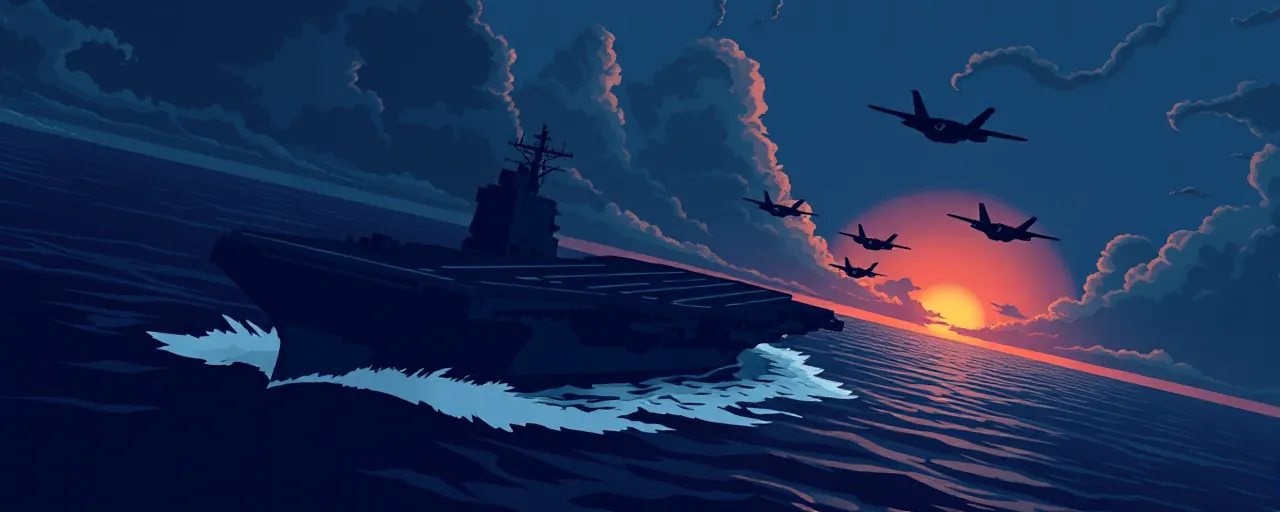The Stakes Couldn’t Be Higher
America’s naval dominance is under siege. China’s pumping out nuclear-powered carriers and stealth submarines like it’s a race to rule the Pacific, and here we are, stuck with a Navy that can’t build fast enough to keep up. The Department of Defense just laid it bare: the Navy’s aiming to churn out one Columbia-class and two Virginia-class submarines a year, plus more Gerald R. Ford-class carriers. This isn’t some bureaucratic wish list; it’s a desperate bid to stay ahead of a rival that’s got no qualms about flexing its maritime muscle. If we don’t deliver, we’re handing Beijing the keys to the world’s oceans.
Look at the numbers. The Columbia-class submarine, the backbone of our nuclear triad, is the Navy’s top priority, and for good reason. Rear Adm. Todd S. Weeks didn’t mince words before the Senate: the aging Ohio-class subs are on their last legs, and without replacements, we’re staring down a gap in our deterrence that adversaries like China and Russia would love to exploit. This isn’t about prestige; it’s about survival in a world where power projection keeps the peace.
Revving Up the Industrial Engine
The Navy’s not sitting on its hands. Matthew D. Sermon, who runs the maritime industrial base program, told lawmakers they’re pouring effort into 1,200 projects across 40 states to beef up supply chains, train workers, and drag our shipyards into the 21st century. Since 2018, parts delivery for submarines has jumped over 250%, and last year alone, they helped industry hire and train 12,600 workers. That’s real progress, the kind that puts Americans to work and keeps our fleet afloat. The Additive Manufacturing Center in Virginia’s already printed 270 parts, slashing delays by over 1,000 days. This is how you fight smart, not just hard.
But it’s not enough yet. Sermon admitted parts production needs to double to meet demand, and Rear Adm. Jonathan E. Rucker pegged Virginia-class sub production at a measly 1.13 per year against a goal of 2.0. Workforce shortages, shaky suppliers, and outdated shipyard gear are the culprits. These aren’t abstract problems; they’re roadblocks to readiness that hit us where it hurts. China’s not waiting for us to get our act together, and neither should we.
The Cost of Falling Behind
Let’s talk straight. Every delay in delivering the USS District of Columbia or the USS John F. Kennedy isn’t just a schedule slip; it’s a signal to our enemies that we’re vulnerable. Rucker’s team has 14 Virginia-class subs under construction, with two delivered last year, but the pace is glacial. Meanwhile, China’s churning out warships at a clip that’d make the Cold War Soviets blush. Historical lessons scream at us: when the U.S. flexed its industrial might in World War II, we buried the Axis under sheer output. Today, that same grit’s needed to keep the Pacific ours.
Some naysayers whine about the price tag. Modernizing the triad and ramping up shipbuilding costs money, sure, over $1 trillion by some estimates. But what’s the alternative? Skimp now, and we’re stuck with a hollowed-out Navy when China’s carriers start prowling our backyard. Fiscal hawks need to wake up: national debt’s a problem, but it’s nothing compared to the cost of losing our edge. Interest payments topped defense spending in 2024, $1.124 trillion to $1.107 trillion. That’s a disgrace, but the fix isn’t cutting security; it’s growing the economy to foot the bill.
Innovation Isn’t Optional
Here’s where it gets exciting. The Navy’s betting big on 3D printing, and it’s paying off. That Virginia center’s not just a gimmick; it’s a game-changer, cranking out parts in weeks instead of months. Submarine hulls that used to tie up supply chains for years? Now they’re done at 90% less cost. This isn’t sci-fi; it’s the future of how we build, and it’s keeping us in the fight. The military’s additive manufacturing market’s set to hit $7.5 billion by 2031, and we’re leading it. That’s American ingenuity at work, not some government handout.
Contrast that with the hand-wringing from folks who’d rather debate ethics than win wars. They fret about arms races and escalation, as if deterrence grows on trees. Reality check: Russia and China aren’t slowing down their nuclear upgrades because we play nice. The triad’s not a luxury; it’s why they think twice before crossing us. Modernizing it keeps our allies safe and our enemies guessing. Anything less is a gamble we can’t afford.
Time to Double Down
The Navy’s on the right track, but it’s a sprint, not a stroll. Every ship delivered, from the USS New Jersey to the USS Doris Miller, is a brick in the wall holding back aggression. Rear Adm. Casey J. Moton’s team is pushing the Ford-class carriers forward, with the USS Gerald R. Ford already proving its worth post-Hamas attack. But with labor shortages stretching construction timelines by years and costs ballooning from $3.4 billion to $10.4 billion, we’ve got to move faster. Shipyards need workers, not excuses, and that means better wages and training, not endless studies.
This is about more than ships; it’s about who runs the world. China’s betting we’ll blink, that we’ll let delays and debt talk us into retreat. They’re wrong. The Navy’s industrial push is a signal we’re here to stay, and with leaders like Weeks and Rucker driving it, we’ve got the talent to pull it off. America’s not just rebuilding a fleet; we’re rebuilding the backbone to keep freedom afloat. Let’s get it done.
